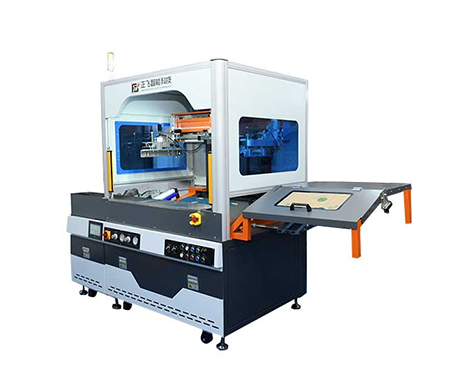
Screen printing machine manufacturer: What is the technical advantage of screen printing machine?
Screen printing belongs to lithographic printing, lithographic printing, relief printing, intaglio printing and four printing methods. Block printing includes reproduction, engraving, jet printing and screen printing. The principle of perforated plate printing is: when printing plates (paper film plates or other plates that can be made through ink holes), the ink passes through the holes of perforated plates to the substrate (paper, ceramics, etc.) through a certain pressure to form images or words. In plate printing, screen printing machine screen printing is the most widely used.
Screen printing machine screen printing is silk fabric, synthetic fiber fabric or screen stretched on the screen frame, the use of hand-carved film or photochemical plate making screen printing plate, and then in the printing plate (paper film version or other version can be made through the ink hole), through a certain pressure to make ink through the plate hole to the substrate (paper, ceramics, etc.). Form an image or text. Modern screen printing technology, is the use of sensitive materials through the method of sensitive plate production of silk screen plate (silk screen holes on the screen plate for the graphic part of the screen hole is through, rather than the graphic part of the screen hole is blocked). When printing, the extrusion of the scraper makes the ink transfer to the substrate through the mesh of the text and text part, forming the same text as the original text. The silk screen printing machine adopts simple process, convenient operation, simple printing, plate making and low cost, strong adaptability. Screen printing has a wide range of applications, common prints are: color oil paintings, posters, business cards, mounted covers, commercial signs and printed textiles.
Screen printing technology has the following main characteristics:
1, screen printing can use a variety of ink. Namely: oil, water - based, synthetic resin emulsion, powder and other types of ink.
2. The layout is soft. Screen printing layout is soft and flexible. It is not only suitable for printing on soft materials such as paper and cloth, but also suitable for printing on hard materials such as glass and ceramics.
3, screen printing indentation is small. Due to the low pressure used in printing, it is also suitable for printing on fragile objects.
4, thick ink layer, strong coverage.
5, not limited by the surface shape and area size of the substrate. As mentioned above, screen printing can be printed not only on a flat surface, but also on a curved or spherical surface. It is not only suitable for printing on small objects, but also for printing on larger objects. This printing method has great flexibility and wide applicability.
